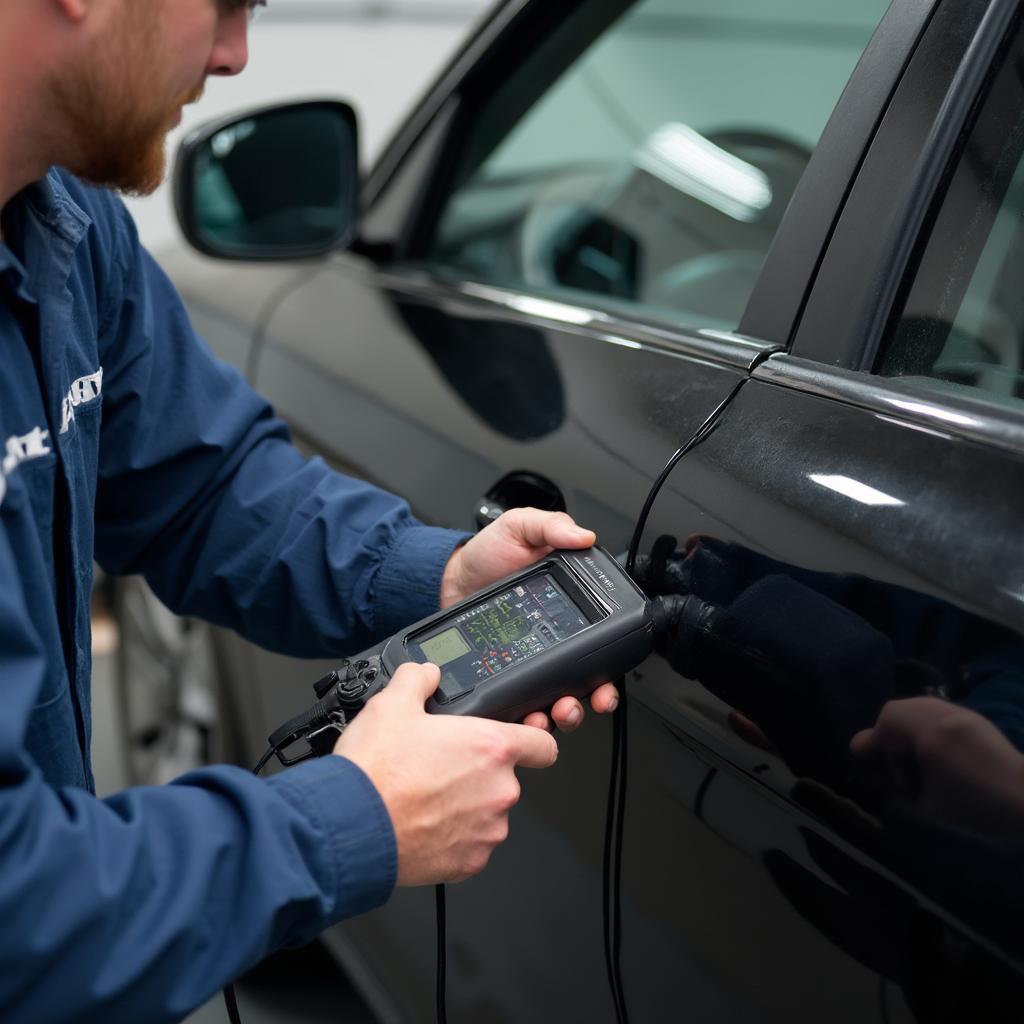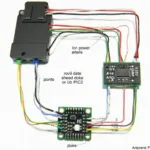OBD2, or On-Board Diagnostics II, has revolutionized car repair and maintenance. But when did US car makers start OBD2? This article delves into the history of OBD2, exploring its origins and implementation timeline in the United States. We’ll cover key milestones, the reasons behind its adoption, and its impact on the automotive industry.
The Road to Standardization: A Brief History of OBD2
Before OBD2, car diagnostics were a Wild West. Different manufacturers had proprietary systems, making it difficult for independent mechanics to diagnose problems. The need for a standardized system became clear in the face of growing emissions concerns. California led the charge, introducing OBD1 in the late 1980s. However, OBD1 had limitations, only monitoring some emission-related components. This paved the way for a more comprehensive system, OBD2.
The Environmental Protection Agency (EPA) mandated OBD2 for all 1996 model year cars and light trucks sold in the United States. This standardized the diagnostic connector, the communication protocol, and the diagnostic trouble codes (DTCs). This landmark decision was a pivotal moment, ushering in a new era of easier and more effective car repairs. It made emissions testing more uniform and enabled vehicle owners to access more information about their car’s health.
Why 1996? The Clean Air Act and OBD2 Implementation
The 1990 amendments to the Clean Air Act were the driving force behind OBD2’s 1996 implementation date. The amendments aimed to significantly reduce air pollution from vehicles. OBD2 was seen as a crucial tool in achieving this goal by enabling more accurate emissions testing and prompting timely repairs of emissions-related problems. By standardizing the system, it became easier to monitor and control vehicle emissions across the board.
Impact of OBD2 on the Automotive Industry
OBD2 had a profound impact on the automotive industry. It facilitated the development of advanced diagnostic tools. What year OBD2 started is a common question, and the answer, 1996, is significant. Mechanics could now easily diagnose problems regardless of the vehicle’s make or model. This also led to a growth in the aftermarket for OBD2 scanners, empowering car owners to monitor their own vehicles and perform basic diagnostics.
 Mechanic Using OBD2 Scanner to Diagnose Car Problems
Mechanic Using OBD2 Scanner to Diagnose Car Problems
OBD2 Beyond 1996: Global Adoption and Continued Development
While the US mandated OBD2 in 1996, its influence spread globally. Variations of OBD2, such as EOBD in Europe and JOBD in Japan, were adopted. These systems share core principles with OBD2, promoting international standardization in vehicle diagnostics. This global adoption further solidifies OBD2’s impact on the automotive world. The system continues to evolve, incorporating new technologies and addressing emerging challenges in vehicle diagnostics and emissions control.
Evolution of OBD2: From Emissions to Advanced Diagnostics
Initially, OBD2 primarily focused on emissions monitoring. However, OBD2 when did it start tracking other vehicle systems? Over time, its scope has expanded to include a wide array of systems, from the transmission and ABS to the airbag system and beyond. This expansion has made OBD2 an invaluable tool for comprehensive vehicle diagnostics.
Conclusion: OBD2’s Lasting Legacy
When did US car makers start OBD2? The answer, 1996, marks a turning point in automotive history. The mandate for OBD2 transformed car repair and emissions monitoring, leading to cleaner air and more efficient vehicle maintenance. From its initial focus on emissions to its present-day role in comprehensive vehicle diagnostics, OBD2 continues to be an essential part of the automotive landscape.
FAQ
- What is OBD2? OBD2 is a standardized system for diagnosing car problems.
- When was OBD2 mandated in the US? 1996 for all new cars and light trucks.
- Why was OBD2 introduced? Primarily to reduce vehicle emissions and improve air quality.
- What is a DTC? A Diagnostic Trouble Code, which indicates a specific problem in the vehicle.
- Can I use an OBD2 scanner on my car? Yes, if your car is a 1996 model year or newer.
- What are the benefits of OBD2? Easier diagnostics, more accurate emissions testing, and greater transparency for car owners.
- Is OBD2 used worldwide? Variations of OBD2 are used globally, promoting international standardization.
Need support? Contact us via WhatsApp: +1(641)206-8880, Email: [email protected] or visit us at 789 Elm Street, San Francisco, CA 94102, USA. Our customer service team is available 24/7.

